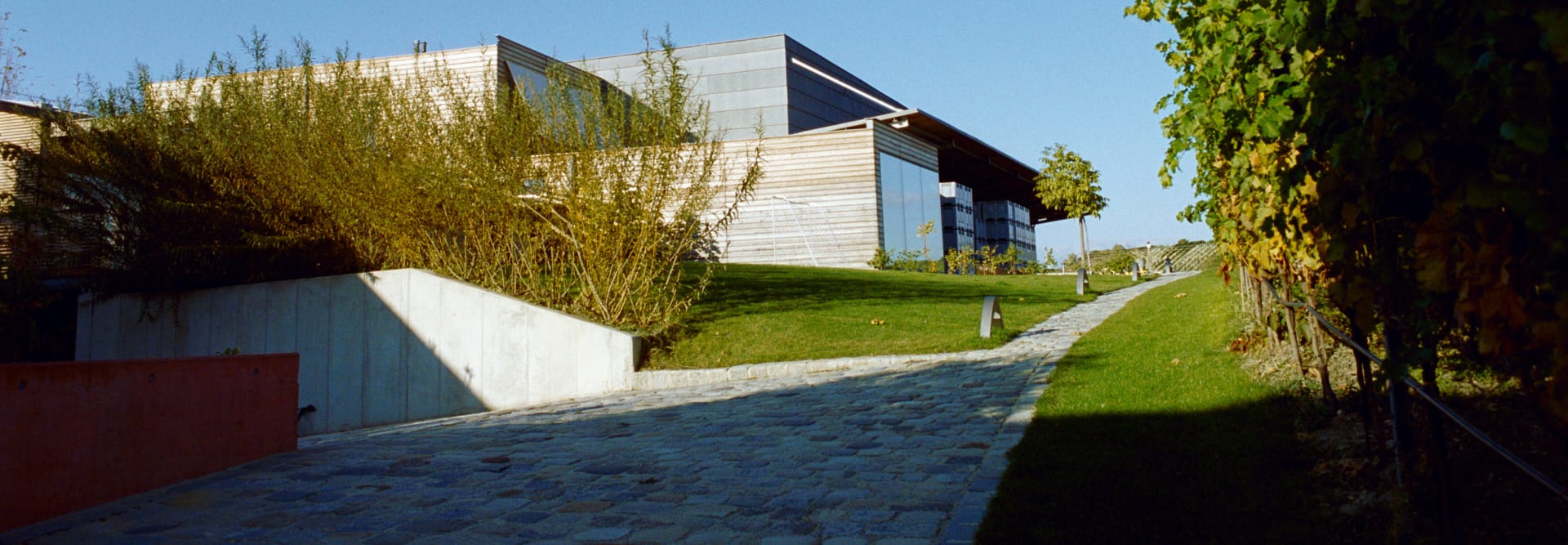Heinrich Red 2017
-
Wine
Enthusiast -
James
Suckling



Product Details
Your Rating
Somm Note
Winemaker Notes
Zweigelt is Austria’s most-planted red grape variety and is favored for its soft and fruity character, making it easy to enjoy and versatile at the table. Its fresh and bright profile allows Zweigelt to cut the richness of traditional Hungarian goulash or complement the flavor of roasted game birds or earthy chanterelle mushrooms.
Professional Ratings
-
Wine Enthusiast
Juicy plum meets tart cherry. This is the theme on both nose and palate of this invigorating, fresh and uncomplicated but very juicy red. Its very own spicy freshness suggests that this would also be great chilled in summer—full marks for honest fun.
-
James Suckling
A boisterous, cherry-soaked red, replete with elderberries and citrus. Medium body, fine tannins and a fruity, sour-cherry finish. 50% zweigelt, 35% blaufränkisch and 15% sankt laurent. Drink now.
Other Vintages
2015-
Wine
Enthusiast






Gernot and Heike Heinrich founded their winery in 1990 with just one hectare and have steadily grown to 90 hectares today. Heinrich was one of the first in the region to transition from simple white wines to high-quality reds in the early 1990s, and became famous for powerful red blends such as Salzberg, Gabarinza, and Pannobile. In recent years, the focus has turned to Blaufränkisch from the nearby Leithaberg DAC, and to “Freyheit,” a line of wines produced with minimal intervention in the cellar. Heinrich converted to biodynamics in 2006 and is a member of Respekt, a certifying body for biodynamic viticulture in Austria. Heinrich today is today one of Austria’s most innovative wine producers.

With hundreds of red grape varieties to choose from, winemakers have the freedom to create a virtually endless assortment of blended red wines. In many European regions, strict laws are in place determining the set of varieties that may be used, but in the New World, experimentation is permitted and encouraged resulting in a wide variety of red wine styles. Blending can be utilized to enhance balance or create complexity, lending different layers of flavors and aromas. For example, a red wine blend variety that creates a fruity and full-bodied wine would do well combined with one that is naturally high in acidity and tannins. Sometimes small amounts of a particular variety are added to boost color or aromatics. Blending can take place before or after fermentation, with the latter, more popular option giving more control to the winemaker over the final qualities of the wine.
How to Serve Red Wine
A common piece of advice is to serve red wine at “room temperature,” but this suggestion is imprecise. After all, room temperature in January is likely to be quite different than in August, even considering the possible effect of central heating and air conditioning systems. The proper temperature to aim for is 55° F to 60° F for lighter-bodied reds and 60° F to 65° F for fuller-bodied wines.
How Long Does Red Wine Last?
Once opened and re-corked, a bottle stored in a cool, dark environment (like your fridge) will stay fresh and nicely drinkable for a day or two. There are products available that can extend that period by a couple of days. As for unopened bottles, optimal storage means keeping them on their sides in a moderately humid environment at about 57° F. Red wines stored in this manner will stay good – and possibly improve – for anywhere from one year to multiple decades. Assessing how long to hold on to a bottle is a complicated science. If you are planning long-term storage of your reds, seek the advice of a wine professional.

Fog and humidity arise from the Neusiedlersee (lake), and extend over the wet flatlands region of the same name, all the way to Austria’s border with Hungary. This moisture, coupled with the daily sunshine that reflects from its wet surfaces, serves as the perfect environment for the development of the desirable fungus called, Botrytis cinerea.
This fungus causes the grapes to essentially “rot” and dry, concentrating their sugars for harvest. It also helps the grapes develop intricate phenolic complexities leading to some of the most sought-after and unique sweet wines in the world. Austrian law categorizes these botrytized, sweet wines according to the must weight (sugar concentration) at harvest in the same way as the Germans. So the wines will be labeled, Auslese, Beerenauslese, Trockenbeerenauslese and Eiswein.
While the region’s reputation has historically ridden on the success of its sweet, botrytized wines, in 2011, Austria granted the official appellation of origin, Neusiedlersee, to its high quality Zweigelt red wines. As a result, any of its prestigious sweet wines will be actually be labeled after the general region of Burgenland.
Neusiedlersee’s slopes of mica, schist, limestone and variations in gravel, sand and clay make it ideal for its indigenous red varieties, Blaufränkisch, St. Laurent and Zwiegelt, as well as the international varieties of Pinot Noir (Blauburgunder), Merlot, Cabernet and even Syrah.
Though not widely planted here, some white wines, such as Pinot Blanc (Weissburgunder), have distinguished themselves locally.
